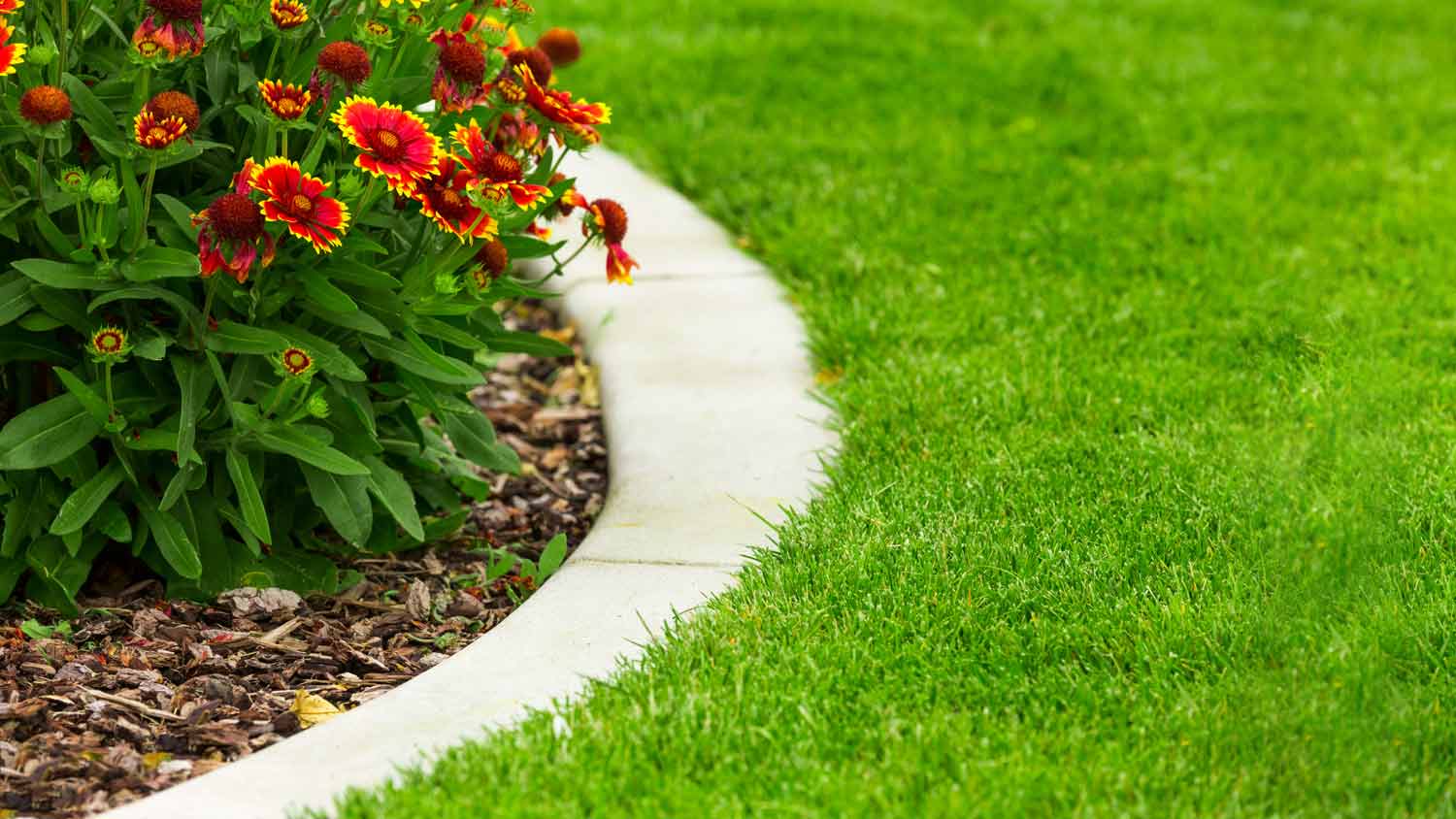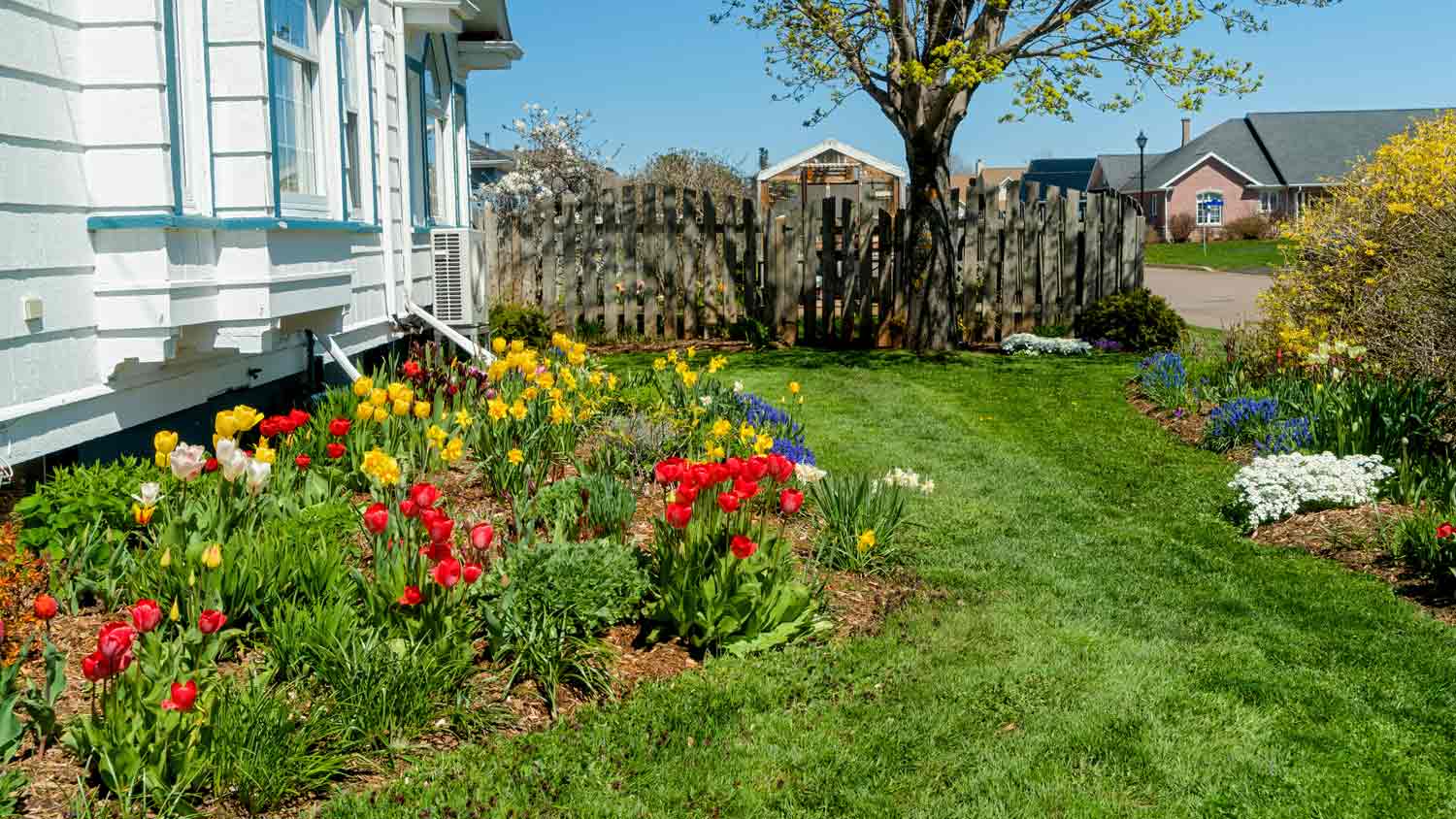
The average lawn mowing cost runs between $50 and $200 depending on factors like your lawn’s size and shape. Here’s what to expect.
Stop the spread and keep your flower beds a grass-free zone


While a luscious lawn is coveted among homeowners, grass also has a pesky habit of spreading into unwanted areas, such as flower beds. Luckily, you can learn how to stop grass from growing in flower beds with a few DIY landscaping methods. Learn how to stop grass from growing where it shouldn’t with these tips, and don’t hesitate to hire a local lawn care professional for assistance.
Some types of grass can spread quickly due to tillers, which are new shoots that grow next to the grass plant, or rhizomes, which are underground runners that pop up from a grass plant a distance away. Tillers and rhizomes allow grass plants to quickly spread and thicken and are common reasons why grass spreads beyond the boundaries of a lawn and into gardens and flower beds. However, regular maintenance and preventative landscaping can help control grass growth around your home and garden.

The first step to prevent grass from growing in areas where it shouldn’t is to keep the lawn tidy and well-kept. Maintaining clear and defined edges is essential. Establish a routine of regularly trimming your lawn’s edges and pushing back the soil within the lawn’s boundaries with a hoe. This method will keep grass from migrating to your flower beds or other unwanted areas.
Placing a barrier between your grass and flower beds is an effective solution to stop grass from growing where it shouldn’t. Plus, it adds a bit of elegance to your home’s landscaping.
You can install many kinds of lawn edging, but materials such as steel, bricks, or plastic edging will be most successful in separating your lawn from flower beds. You place these materials a few inches into the ground and create a solid barrier, making it more difficult for grass to grow around. Other edging materials, such as rocks or tile, will also work in creating separation but are less effective in stopping grass since they aren’t placed as deep into the soil.
Add more distance between your lawn and flower beds by digging a shallow moat. Use a small spade to dig a small ditch about six inches wide around the edge of your lawn. As you dig, throw excess dirt to the flower bed side to elevate it. The border at the edge of the lawn should be a sharp drop for a clean, manicured look.
This border, also known as an English border, is a cost-effective way to prevent grass from growing into your flower beds. The moat allows you to see any grass or weeds that start to make their way closer to your flower beds and a little weeding will keep you on top of the rogue blades that pop up from time to time.
Stop any grass growth in its tracks by adding a thick layer of mulch. The mulch will smother the grass and as an added benefit, will provide extra nutrients to the soil to help your garden or flowers flourish. You can continue adding mulch as needed throughout the spring and summer to help your plants stay healthy and keep any grass growth at bay.

While the grass-stopping methods mentioned above are surefire ways to keep your grass in line, consider trying these tips to make the process easier and more effective.
Check your flower beds and garden regularly to see if new grass is popping up. Weed any stragglers that appear by hand.
Keep up on lawn maintenance and trim the edges so overgrowth doesn’t occur.
Mow the lawn at the highest setting to slow grass growth on your lawn. This cut setting will prevent grass from growing and spreading to other areas.
If you’ve tried the above grass-stopping methods to no avail, it’s time to contact your local lawn care pros for help. A local lawn care service can identify the reasoning behind your creeping grass, recommend a landscaping plan, and then implement it. The cost of hiring a professional landscaper is $50 to $100 per hour for a range of smaller lawn care services.
Addressing the problem yourself will cost less, but sometimes the experts may be more successful and will tailor their approach to stop the grass from growing where it shouldn’t without hurting your other landscaping.
From average costs to expert advice, get all the answers you need to get your job done.

The average lawn mowing cost runs between $50 and $200 depending on factors like your lawn’s size and shape. Here’s what to expect.

The cost to renovate your lawn depends on the extent of the damage. Our guide will show you how much lawn renovation costs.

The cost to reseed a lawn can vary depending on the size of your yard and the condition of the soil. We’ll help you figure out the true cost of reseeding or overseeding your lawn, along with whether or not you should hire a professional.

Whether you're opting for a lawn alternative or looking to rejuvenate your turf, check out these five options to remove grass from your lawn.

The type of grass you have dictates a lot about your lawn, including how you take care of it. This lawn grass identification guide can help.

If you notice brown patches, thin blades, or weeds on your lawn, you should call a lawn care company. Here’s who to call for lawn problems.